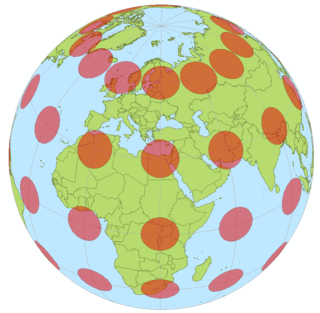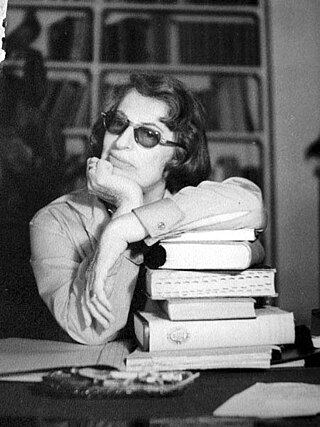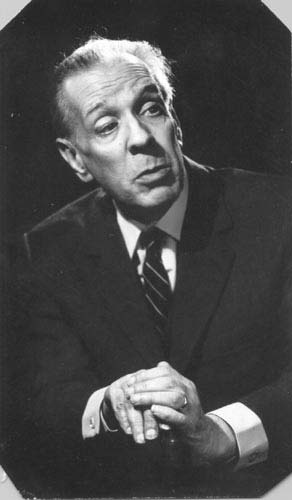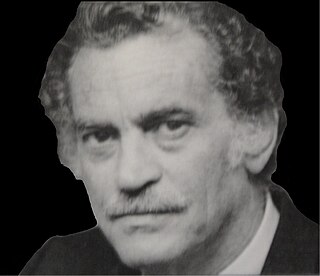Related Research Articles

Jorge Francisco Isidoro Luis Borges Acevedo was an Argentine short-story writer, essayist, poet and translator regarded as a key figure in Spanish-language and international literature. His best-known works, Ficciones (transl. Fictions) and El Aleph, published in the 1940s, are collections of short stories exploring motifs such as dreams, labyrinths, chance, infinity, archives, mirrors, fictional writers and mythology. Borges's works have contributed to philosophical literature and the fantasy genre, and have had a major influence on the magic realist movement in 20th century Latin American literature.

Umberto Eco was an Italian medievalist, philosopher, semiotician, novelist, cultural critic, and political and social commentator. In English, he is best known for his popular 1980 novel The Name of the Rose, a historical mystery combining semiotics in fiction with biblical analysis, medieval studies and literary theory, as well as Foucault's Pendulum, his 1988 novel which touches on similar themes.
"Tlön, Uqbar, Orbis Tertius" is a short story by the 20th-century Argentine writer Jorge Luis Borges. The story was first published in the Argentinian journal Sur, May 1940. The "postscript" dated 1947 is intended to be anachronistic, set seven years in the future. The first English-language translation of the story was published in 1961.

Adolfo Bioy Casares was an Argentine fiction writer, journalist, diarist, and translator. He was a friend and frequent collaborator with his fellow countryman Jorge Luis Borges. He is the author of the Fantastique novel The Invention of Morel.
H. Bustos Domecq is a pseudonym used for several collaborative works by the Argentine writers Jorge Luis Borges and Adolfo Bioy Casares.

The map–territory relation is the relationship between an object and a representation of that object, as in the relation between a geographical territory and a map of it. Mistaking the map for the territory is a logical fallacy that occurs when someone confuses the semantics of a term with what it represents. Polish-American scientist and philosopher Alfred Korzybski remarked that "the map is not the territory" and that "the word is not the thing", encapsulating his view that an abstraction derived from something, or a reaction to it, is not the thing itself. Korzybski held that many people do confuse maps with territories, that is, confuse conceptual models of reality with reality itself. These ideas are crucial to general semantics, a system Korzybski originated.

Silvina Ocampo was an Argentine short story writer, poet, and artist. Ocampo's friend and collaborator Jorge Luis Borges called Ocampo "one of the greatest poets in the Spanish language, whether on this side of the ocean or on the other." Her first book was Viaje olvidado (1937), translated as Forgotten Journey (2019), and her final piece was Las repeticiones, published posthumously in 2006.

Céline and Julie Go Boating is a 1974 French film directed by Jacques Rivette. The film stars Dominique Labourier as Julie and Juliet Berto as Céline.

Emir Rodríguez Monegal, born in Uruguay, was a scholar, literary critic, and editor of Latin American literature. From 1969 to 1985, Rodríguez Monegal was professor of Latin American contemporary literature at Yale University. He is usually called by his second surname Emir R. Monegal or Monegal.

This is a bibliography of works by Argentine short-story writer, essayist, poet, and translator Jorge Luis Borges (1899–1986).

Simulacra and Simulation is a 1981 philosophical treatise by the philosopher and cultural theorist Jean Baudrillard, in which he seeks to examine the relationships between reality, symbols, and society, in particular the significations and symbolism of culture and media involved in constructing an understanding of shared existence.
Bonini's paradox, named after Stanford business professor Charles Bonini, explains the difficulty in constructing models or simulations that fully capture the workings of complex systems.
aUI is a philosophical, a priori language created in the 1950s by W. John Weilgart, Ph.D. a philosopher and psychoanalyst originally from Vienna, Austria. He described it as "the Language of Space", connoting universal communication, and published the fourth edition of the textbook in 1979; a philosophic description of each semantic element of the language was published in 1975.

Sylvie and Bruno, first published in 1889, and its second volume Sylvie and Bruno Concluded published in 1893, form the last novel by Lewis Carroll published during his lifetime. Both volumes were illustrated by Harry Furniss.
Norman Thomas di Giovanni was an American-born editor and translator known for his collaboration with Argentine author Jorge Luis Borges.

Rodolfo Enrique Fogwill, who normally went only by his surname, Fogwill, was an Argentine short story writer, novelist, and businessman. He was a distant relative of the novelist Charles Langbridge Morgan. He was the author of Malvinas Requiem, one of the first narratives to deal with the Falklands War. Fogwill died on August 21, 2010, from a pulmonary dysfunction.

Argentine humour is exemplified by a number of humorous television programmes, film productions, comic strips and other types of media. Everyday humour includes jokes related to recurrent themes, such as xenophobic jokes at the expense of Galicians (Spaniards) called chistes de gallegos, often obscene sex-related jokes, jokes about the English, the Americans, blonde women, dark humour, word and pronunciation games, jokes about Argentines themselves, etc.

The Book of Fantasy is the English translation of Antología de la literatura fantástica, an anthology of approximately 81 fantastic short stories, fragments, excerpts, and poems edited by Jorge Luis Borges, Adolfo Bioy Casares, and Silvina Ocampo. It was first published in Argentina in 1940, and revised in 1965 and 1976. Anthony Kerrigan had previously translated a similar work by the same editors, Cuentos breves y extraordinarios (1955) as Extraordinary Tales, published by Herder & Herder in 1971. The 1988 Viking Penguin edition for English-speaking countries includes a foreword by Ursula K. Le Guin.

Man Facing Southeast is a 1986 Argentine science fiction drama film written and directed by Eliseo Subiela, starring Lorenzo Quinteros and Hugo Soto.

Estela Canto was an Argentine writer, journalist and translator best known for her relationship with Jorge Luis Borges.
References
- ↑ J. L. Borges, A Universal History of Infamy (translated by Norman Thomas de Giovanni), Penguin Books, London, 1975. ISBN 0-14-003959-7.
- 1 2 "1946 | Borges Center". Archived from the original on 2013-01-24. Retrieved 2011-12-14.
- ↑ "1960". Borges.pitt.edu.
- 1 2 Edney, Matthew H. (2009). Mapping an Empire: The Geographical Construction of British India, 1765-1843. University of Chicago Press. p. 353n39. ISBN 978-0-226-18486-9.
- ↑ Eco, Umberto (1995). How to Travel with a Salmon & Other Essays. Houghton Mifflin Harcourt. pp. 95–106. ISBN 978-0-547-54043-6.
- ↑ "Archived copy" (PDF). Archived from the original (PDF) on 2021-01-14. Retrieved 2021-03-21.
{{cite web}}: CS1 maint: archived copy as title (link)